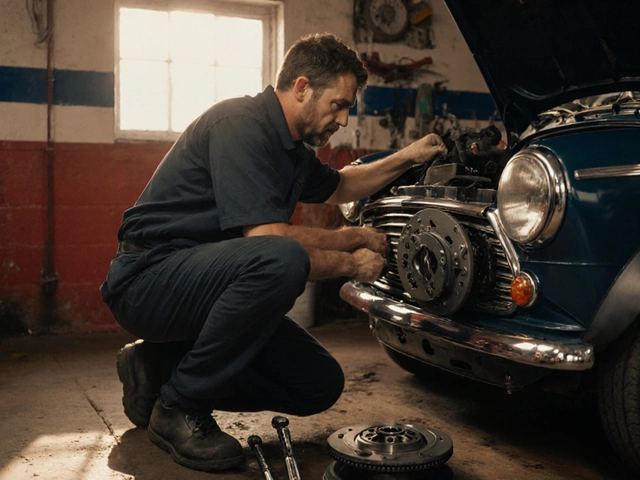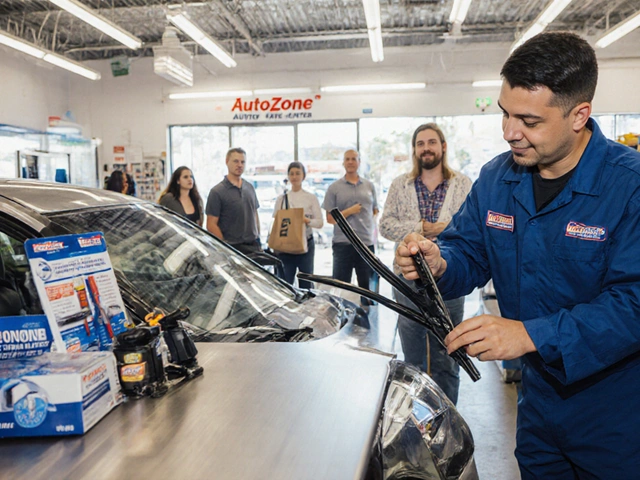Alloy wheels aren’t just a way to make your car look flashier. There’s real science behind them—and some solid reasons people pick them over old-school steel wheels. If you’ve ever wondered why some wheels look shinier, lighter, or just... cooler, you’re in the right spot.
So, what exactly are alloys on wheels? Basically, it’s a wheel made from a blend of metals, usually aluminum mixed with a bit of nickel or magnesium. This combo keeps them strong but much lighter than straight-up steel. Less weight means your car needs less effort to move, which helps with steering, braking, and even fuel economy. Feeling the car respond quicker is a real perk many drivers notice right away after swapping from steel to alloy rims.
But there’s more to the story—keep reading for the details on how these wheels are crafted, why they’re not just about looks, and what to watch out for if you’re thinking about upgrading.
- The Basics: What Are Alloy Wheels?
- How Alloy Wheels Are Made
- Why Drivers Love Alloy Wheels
- Common Myths About Alloy Wheels
- Tips for Taking Care of Alloy Wheels
- Choosing the Right Alloy Wheels for Your Ride
The Basics: What Are Alloy Wheels?
When people talk about alloy wheels, they’re not just tossing out a fancy phrase. These are car wheels made from a blend of metals, mostly aluminum but sometimes magnesium. Basically, “alloy” just means a mix, which gives these wheels a sweet spot between strength and weight.
Let’s break it down. Standard steel wheels are heavy and kind of basic. Alloy wheels switch things up by mixing aluminum (which is way lighter than steel) with other stuff like nickel or magnesium. This keeps the wheel strong but also light, which is a big deal for how your car handles and feels.
Why would anyone care about lighter wheels? Less weight at each corner means less work for your suspension and engine. That leads to a more responsive feel when you steer and hit the brakes. Lighter wheels also help cut down on fuel use, even if it’s just a little. Here’s a quick comparison:
| Wheel Type | Average Weight (per wheel) | Common Material |
|---|---|---|
| Steel Wheel | Approx. 20–25 lbs | Steel |
| Alloy Wheel | Approx. 15–20 lbs | Aluminum Alloy |
Besides being lighter, alloy wheels tend to look much better than steel wheels. That’s because they’re easier to shape into fun and stylish designs. Car makers and drivers both love that. Some wheels even come polished or painted in wild colors straight from the factory.
To sum up, if you see a car with eye-catching rims that don’t look like plain steel, you’re probably looking at alloy wheels. They’re more than just good looks; they change the way your car drives and feels every day.
How Alloy Wheels Are Made
Ever wondered where those sleek alloy wheels actually come from? The process is more than just slapping some metal together and calling it a day. Let’s break it down.
Most alloy wheels start with aluminum as the main material. Why aluminum? It’s much lighter than steel but can be just as strong when mixed with a little magnesium or nickel. This makes a big difference for your car’s performance, especially when you want quick steering response and better fuel savings.
There are a few different ways alloy wheels are made, but the two most common are casting and forging:
- Casting: Liquid aluminum alloy is poured into a mold shaped like a wheel. It cools and hardens, then gets cleaned up and cut to size. Most of the wheels you see on regular cars are made this way because it’s cost-effective.
- Forging: This starts with a solid chunk of aluminum alloy that gets squeezed and pressed under crazy-high pressure. The result is a wheel that’s denser, stronger, and usually lighter too. Forged wheels take more effort (and cash) to make, so you mostly find these on high-performance cars or in motorsports.
Sometimes, a process called "flow forming" sits in between casting and forging. It starts with a cast wheel, then spins and stretches the barrel with heat to make it stronger and lighter. Kind of like yeast rising in bread, but way tougher.
Here’s a quick look at the most common materials in alloy wheels:
| Material | Main Benefit |
|---|---|
| Aluminum | Lightweight, rust-resistant, easy to shape |
| Magnesium | Super light, but more expensive |
| Nickel | Adds strength and durability |
Alloy wheels aren’t just cast, painted, and shipped. They go through strict quality checks, including X-rays for cracks and high-speed spin tests. If you see a flawless finish, that’s not just for looks—paint, powder coating, or even clear lacquer helps protect against road salt and dirt.
So next time you see a shiny new set of car rims, just remember: there’s a whole lot of science and engineering under that gloss. Picking the right wheel for your car can make a real difference, especially if you care about both looks and performance.
Why Drivers Love Alloy Wheels
When people talk about alloy wheels, they aren’t just bragging about style. These wheels really do bring a bunch of legit perks that drivers can feel every day. Here’s why so many folks choose them, whether they're into cars or just want a smoother drive to work.
- Lightweight Boosts Performance: Alloy wheels, which are often made from aluminum blends, can be up to 30% lighter than steel ones. That means your car handles corners better and brakes faster. Less weight below your suspension ("unsprung weight" if you want to sound fancy) helps the car stick to the road.
- Fuel Efficiency: Because they’re lighter, your engine doesn’t work as hard to move the car. Most drivers see a small but real bump in gas mileage after switching to alloys—even 2-4% can add up if you drive a lot.
- Better Heat Conduction: Alloys pull heat away from your brakes quicker than steel. That keeps things cooler and reduces brake fade, especially if you drive on hilly roads or get stuck in stop-and-go traffic.
- No More Rust: Unlike steel rims, alloy wheels don’t rust. That’s handy if you live where it rains a ton or where they use salt on icy roads. Less corrosion means your wheels last longer and keep looking good.
- Looks That Pop: Let’s be real—looks matter. Alloys just look sharper. There are hundreds of styles, finishes, and shapes. That’s a big reason you see them on new cars, even straight from the showroom.
If you like cold, hard numbers, check this out:
| Feature | Steel Wheels | Alloy Wheels |
|---|---|---|
| Average Weight (per wheel) | 11-15 kg | 6-9 kg |
| Fuel Efficiency Impact | - | 2-4% better |
| Corrosion Resistance | Low | High |
Don’t just take my word for it. As
"Alloy wheels combine performance and design, making them a top pick for drivers who want both function and style." — Car and Driver Magazinesays, alloys check the boxes for both looks and real-world upgrades. Whether you’re parking at a fancy restaurant or tackling your daily commute, they give your car that extra edge.

Common Myths About Alloy Wheels
There’s a lot of talk out there about alloy wheels, but a bunch of what people say just isn’t true. Let’s clear up the confusion so you don’t fall for the rumors next time you’re picking out new wheels.
- Myth 1: Alloy wheels break way easier than steel wheels. Not really. Yes, alloy wheels can bend or crack if they take a massive hit—like hitting a deep pothole at high speed. But unless you’re off-roading daily, modern alloys are built to handle most city streets just fine.
- Myth 2: All alloy wheels are super expensive. Some high-end options cost a lot, but there are plenty of budget-friendly alloy wheels that don’t break the bank. Plus, with the better performance you get, a lot of folks decide the upgrade is actually worth it.
- Myth 3: Alloy wheels only matter for looks. Sure, a nice set of rims can totally upgrade your ride’s vibe, but they also make your car lighter, which gives you better handling and helps save on fuel. This isn’t just something car people say—it’s a real effect you’ll notice on the road.
- Myth 4: Alloy wheels are impossible to fix. Some damage can’t be reversed, but a lot of scuffs and curb rashes can be repaired by a pro. There are even home kits if you’re into a bit of DIY, but bigger cracks should always go to a specialist for safety.
- Myth 5: They rust just like steel. Alloys don’t actually rust the same way as steel. They can corrode if they’re really neglected, but with normal cleaning, they hold up way better to weather and road salt. My own cat Luna has probably done more damage to my sofa than regular rain will to my alloy wheels.
According to a 2024 survey from a popular car forum (with over 1,200 responses), about 67% of people believed at least one of these myths before switching to alloy wheels.
| Myth | Belief Before Owning Alloys |
|---|---|
| They break easily | 45% |
| Too expensive | 38% |
| Only for looks | 28% |
Don’t let these myths steer you away from making a smart choice for your car rims or next upgrade!
Tips for Taking Care of Alloy Wheels
If you’ve shelled out for alloy wheels, a little care goes a long way. Keeping them in good shape doesn’t have to be a headache, but skipping maintenance can turn your shiny rims into a mess of brake dust and scratches — trust me, Luna once knocked over a bottle of wheel cleaner, and I learned fast how important upkeep is!
Here are some straight-up practical tips to keep your alloy wheels looking sharp and performing well:
- Wash them often. Don’t wait for the grime to pile up. Brake dust, road salt, and grime stick like crazy. Rinse your wheels with water and use a gentle soap and a soft brush at least every couple of weeks, especially if you drive a lot or after winter roads.
- Avoid harsh cleaners. Acidic cleaners can mess up the finish. Go for a pH-neutral wheel cleaner, or just mild car shampoo. If the bottle smells like it could strip paint, skip it.
- Dry thoroughly. Water spots are a pain to get off later. A soft microfiber towel works best — just like you’d use on your car’s paint.
- Inspect regularly. Look for chips, scratches, or curb rash. Catching a scrape early makes touch-ups easier and stops corrosion before it starts.
- Wax your wheels. Same as with your car’s paint, a coat of wax helps keep dirt and brake dust from sticking. Do this every couple months.
- Tighten lug nuts properly. Torque them to the right spec. Over-tightening or using the wrong pattern can warp or crack your precious alloy wheels.
- Watch where you park. Avoid scraping curbs — the number one enemy of good-looking car rims. If parallel parking isn’t your thing, maybe let a friend take the wheel.
Industry pros back all this up.
"Regular cleaning not only preserves the look of alloy wheels but extends their lifespan by preventing corrosive build-up from everyday driving,"says auto care specialist Mark Evans of AutoGeek. He recommends keeping cleaning products and brushes separate from those used on painted surfaces, since even tiny bits of dirt can act like sandpaper on wheels.
Want a comparison of cleaning frequency?
| Driving Habits | Recommended Wheel Cleaning |
|---|---|
| Daily, city traffic | Weekly |
| Mostly highway, little brake use | Every 2-3 weeks |
| Occasional/off-season use | Monthly |
One last thing: If you spot stubborn tar or build-up, use a clay bar or a dedicated wheel cleaner, but never a metal polish unless your wheel materials are bare and not clear-coated. Scratching or removing the protective layer will bring corrosion knocking on your door way sooner than you’d like.
Choosing the Right Alloy Wheels for Your Ride
Picking alloy wheels isn’t just about grabbing the first set that fits. There are a few important things to think about, and getting these details right means you’ll avoid headaches down the road.
Size is huge. Literally. You can’t just slap any size wheel on your car. The diameter and width both matter. Most cars have a recommended wheel size, and ignoring that can mess up your handling, mess with your speedometer, or cause extra tyre wear. If you want a different look, stick as close as possible to what your car maker suggests.
Another thing: pay attention to the bolt pattern and offset. Every vehicle has a specific pattern for the bolts that hold the wheel on, plus a certain way the wheel needs to sit in the wheel well. Picking the wrong setup will literally not fit, or worse, it’ll fit badly and cause problems like wobbles or rubbing.
Thinking about weight? Go lighter. One of the main reasons drivers choose alloy wheels is because they shave off extra weight from each corner of your car. That means a snappier feel and maybe even better gas mileage. Some aftermarket alloy wheels can be up to 30% lighter than the original steel ones your car came with. But don’t go for the absolute lightest without checking strength—especially if you hit a lot of potholes or have rough roads nearby.
Looks are fun but don’t forget finish and protection. Polished or painted alloy wheels need more care. If you live somewhere with salted winter roads or a ton of rain, look for coatings that resist corrosion. Black, silver, gunmetal, and even bright colors are all out there, but pick what matches your car and lifestyle.
Here’s a quick breakdown to help compare what matters most:
| Factor | Why it matters |
|---|---|
| Wheel Size | Impacts vehicle handling, fit, and speedometer accuracy |
| Bolt Pattern | Must match your vehicle for a safe, solid fit |
| Weight | Lighter means better handling and sometimes better fuel efficiency |
| Finish | Affects look and how much cleaning you’ll need to do |
| Offset | Keeps the wheels sitting where they should; prevents rubbing |
One last thing—buy from trusted shops or makers with good reviews. Cheap or counterfeit alloy wheels can crack or fail, which is the last thing anyone needs at highway speeds.




